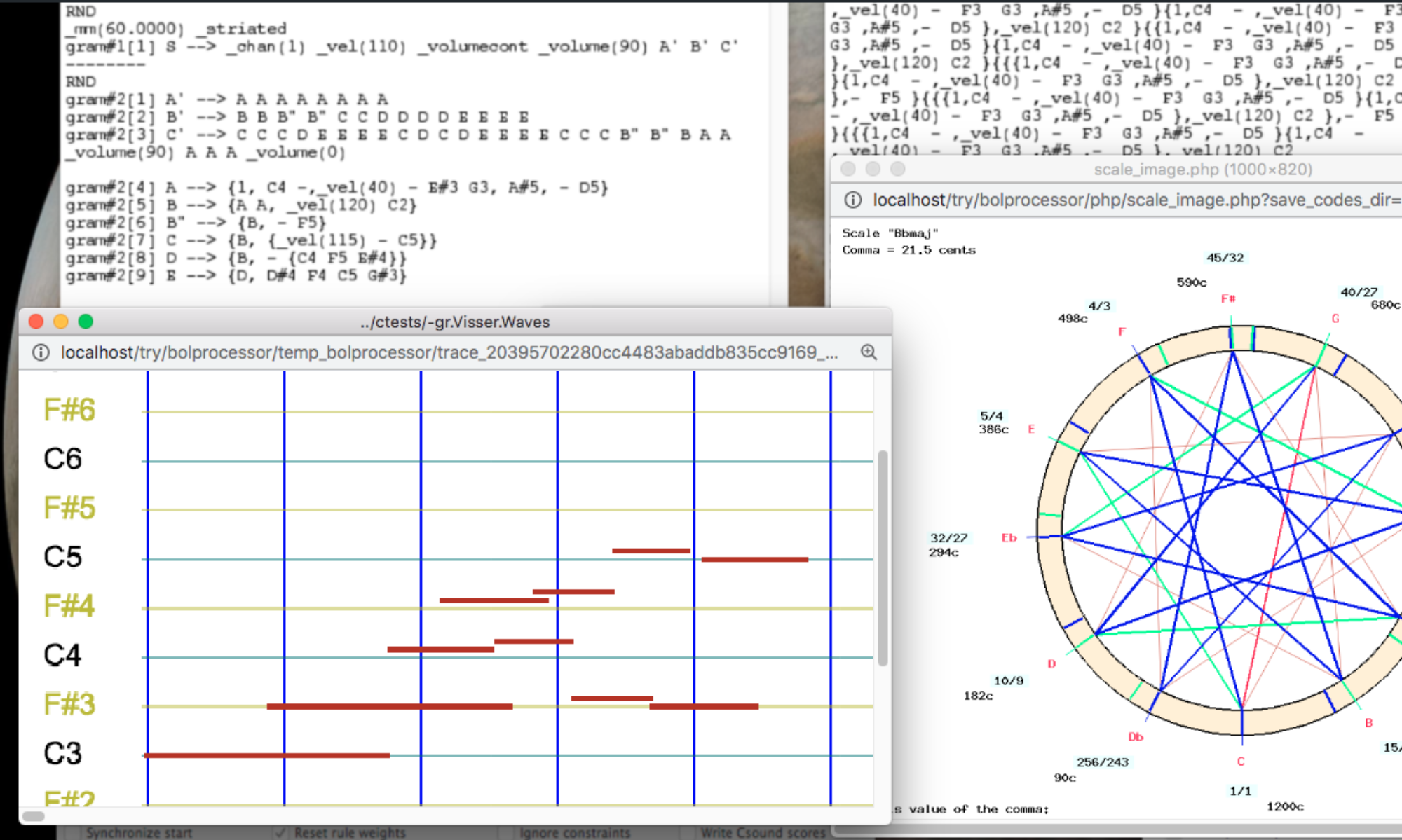The following is a simple grammar illustrating the use of time patterns in smooth time. Whereas striated time is filled with (regular or irregular) pulses, smooth time does not involve counting.
_mm(120.0000) _smooth
GRAM#1[1] S --> {10 , t1 t2 , Part1 Part2}
GRAM#1[2] Part1 --> {t1 t3 t4 , C4 D4 E4 F4 - A4}
GRAM#1[3] Part2 --> {t3 t1 , B4 C5 _ E5}
TIMEPATTERNS:
t1 = 1/1 t2 = 3/2 t3 = 4/3 t4 = 1/2
In this grammar, “t1”, “t2” etc. are the time patterns arranged in such a way that they define a structure of (irregular) “beats” on which notes “C4”, “D4” etc. will be located.
The final arrangement is as follows:
{10, t1 t2, {t1 t3 t4, C4 D4 E4 F4 - A4} {t3 t1, B4 C5 _ E5}}

Time flexibility in Bol Processor is not the effect of arbitrary numerical functions. This flexibility stems from a time structure — Xenakis’ (1963) structure temporelle — that is deeply interwoven with the syntactic description of music.
If striated time is selected, the same structure will be displayed as shown below:

time-objects ‘t1’, ‘t2’, etc., have null durations.
Some time patterns were used in Andréine Bel’s choreographic work: Shapes in Rhythm.
Reference
- Bel, Bernard. Migrating Musical Concepts: An Overview of the Bol Processor. Computer Music Journal, Massachusetts Institute of Technology Press, 1998, 22 (2): 56-64.
